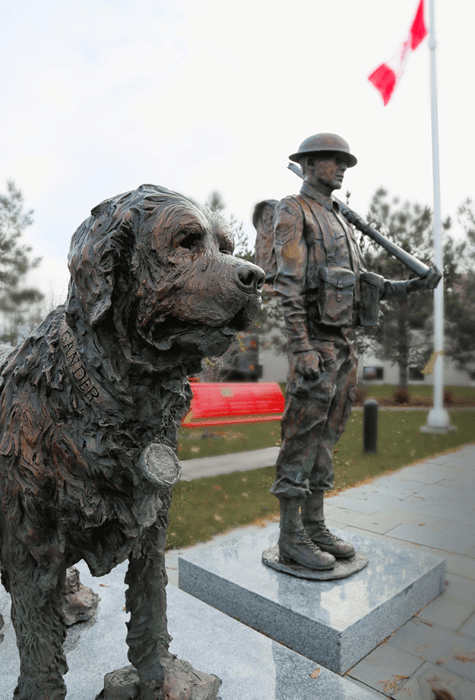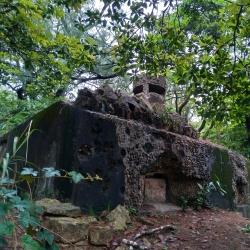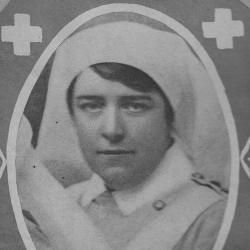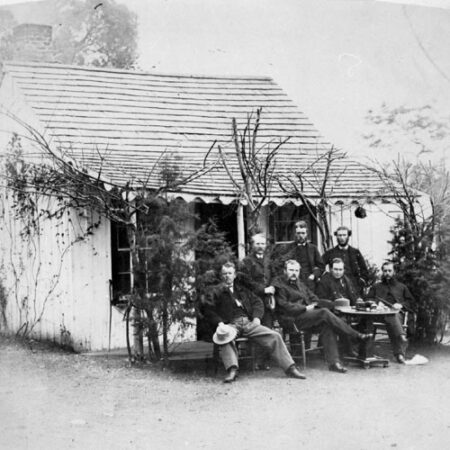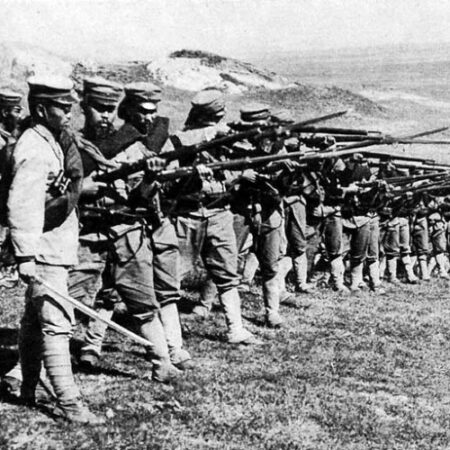This article was published as part of our exhibition on the Battle of Hong Kong: Impossible Odds.
Visit our exhibit to learn more about the fate of the Canadian soldiers sent to defend the colony!
It wasn’t just men and women who shipped for Hong Kong in October 1941. Also travelling with the Royal Rifles of Canada was Gander, a Newfoundland dog who was a high-profile mascot of “C” Force.
Originally named “Pal,” he started life as a family pet in Newfoundland. In an unfortunate accident, however, Pal scratched a child’s face and his owner was forced to get rid of him. Instead of having him put down, the owner gave him to the Royal Rifles, in garrison in the province since October 1940.
The soldiers adopted the animal and renamed him “Gander” after the airfield where they were stationed. Gander soon became their mascot, and the soldiers decided to give him the rank of sergeant so that he could accompany them on their travels.
Hong Kong
From Newfoundland to Hong Kong, Gander travelled with the men of the Royal Rifles. “C” Force arrived in the British colony in November 1941 and the soldiers began their training. Naturally, Gander was exempted from these exercises and free to enjoy the colony’s tropical climate. Of course, it’s a safe bet that his thick coat must have left him sweltering in the heat! Fortunately, the soldier assigned to take care of him, Fred Kelly, gave him frequent cool baths to keep him comfortable.
It was during the battle of Hong Kong that Gander earned a reputation for his courage and heroism. The Newfoundland was actively involved in the fighting. At the height of the battle, a Japanese grenade landed near a group of seven wounded Canadians who had taken shelter not far off. Gander had taken part in the soldiers’ training and knew that a grenade meant danger. Picking up the grenade in his mouth, Gander rushed with it away from the injured soldiers. The grenade exploded, killing him on the spot.

Honouring his sacrifice
Gander’s sacrifice was not recognized immediately after the battle. It took many years and tireless efforts by the Canadian War Museum and veterans associations for his heroism to be acknowledged. On October 27, 2000, Gander posthumously received the Dickin Medal, described as the Victoria Cross for animals. The medal was awarded to Rimshot, another Newfoundland who stood in for Gander, and Fred Kelly. The citation read as follows:
“For saving the lives of Canadian infantrymen during the Battle of Lye Mun on Hong Kong Island in December 1941. On three documented occasions, Gander, the Newfoundland mascot of The Royal Rifles of Canada, engaged the enemy as his regiment joined The Winnipeg Grenadiers, members of Battalion Headquarters “C” Force and other Commonwealth troops in their courageous defence of the island. Twice Gander’s attacks halted the enemy’s advance and protected groups of wounded soldiers. In a final act of bravery, the war dog was killed in action gathering a grenade. Without Gander’s intervention, many more lives would have been lost in the assault.“
Thanks again to the insistence of veterans associations, Gander’s name was also engraved on the “C” Force’s commemorative wall in Ottawa. In 2015, a statue of Gander was erected at Cobequid Veterans Memorial Park in Nova Scotia, along with a statue of a Canadian soldier.
Article written by Julien Lehoux for Je Me Souviens. Translated by Kerry Knapp.
Sources:
- “Canada’s Part in the Defence of Hong Kong”, Hong Kong Veterans Commemorative Association.
- “Mascot Dog Sacrificed Life for Human Comrades”, Anciens combattants Canada/Veterans Affairs Canada.
- “Remembering Sergeant Gander”, Anciens combattants Canada/Veterans Affairs Canada.


